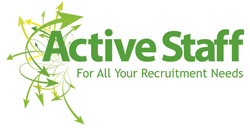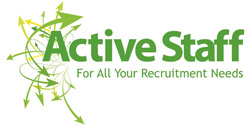Not Creating an accurate Job Description
Ensure that you always describe the job accurately and honestly in your advertisement. If you don’t, you’ll less likely attract candidates with the qualities and abilities that you’re looking for.
A good job description is more than a simple list of duties; it should describe the role’s overall purpose, identify key areas of responsibility, and describe the specific skills needed to succeed. A cultural fit is important, especially if the role is hybrid or work from home. Be sure not to oversell the position, which can lead applicants to believe that it offers more opportunities than it actually does. For example, don’t imply that there’s a likelihood of quick promotion if there isn’t. If you do, your ambitious recruit may feel let down and leave.
Failing to consider recruiting from within
Sometimes, the best candidates could be right under your nose!
It can make commercial sense to fill roles internally, as it cuts the costs and time associated with advertising for external candidates. Also, an existing staff member will be familiar with your organisation’s processes, culture and values. There’s every chance that they would get up to speed in a new role more quickly than a new candidate would.
Promoting, training and developing your own people can boost their morale and productivity. Of course, you’ll likely benefit from knowledge and experience from other parts of the business that could lead to better communication and collaboration.
Recruiting from within can also protect important knowledge that would be lost when people leave your team or company. Our article, Succession Planning, has more on this.
Relying too much on the Interview
Some managers use only an interview to evaluate potential candidates, but is it the best method?
A standard face to face interview, a candidate may say or do anything to get the job that you’re offering. Competency based interviews work well as you can test or exercise to find out how they might perform in the role.
Evaluating skills and behaviours through key measures means it will a diverse range of candidates to shine. After all, not every potentially excellent team member can present themselves at their best under artificial, testing conditions. This is especially true if they are, for example, autistic or dyslexic, or struggling with a poor internet connection.
Using unconscious bias
Recruitment relies on your decision-making abilities, which means that you must avoid unconscious bias. You may unwittingly discriminate against certain candidates in favour of people who share your background, social class, ethnicity, age, or gender.
Accepting candidates regardless of any of those characteristics means that you have a larger pool of talent to draw from, improving your chances of recruiting the best person for the job.
However, as unconscious bias is by definition something that you’re not aware of, simply trying hard to escape it is unlikely to work. Instead, create systems that undermine or block its effects, such as anonymised shortlisting.
At the least, be sure to invite colleagues from beyond your usual circle to contribute to selection and to constructively challenge your judgment.
Hiring people less qualified than you
Some managers are afraid of taking on someone who is more confident or talented than they are because they feel that they may be a threat to their position. But smart managers know that they need bright people to share their insights and bring their strengths to the team.
Hiring people who are better than you can improve your own skills and drive your business forward.
Rejecting an overqualified candidate
It’s tempting to reject an overqualified candidate, either for the same reason as above, or because you’re afraid that they will become bored and leave your organisation for a more satisfying challenge elsewhere.
But highly experienced and talented people may have the skills and ability to help you to develop your team – even if they don’t stay long. To encourage them to be loyal to your company, think about what opportunities for development, progression or reward you might be able to offer to this exceptional person.
Waiting for the perfect candidate
You may have a picture of the ideal employee in your mind but, as you wait for them to appear, you may be jeopardising your team’s productivity by keeping it understaffed for too long. Your team members may have to pick up the extra workload or work overtime, which can affect their morale.
Instead of waiting for someone who fits the role exactly, it’s usually best to hire someone who meets most of your key requirements, fits your corporate culture, and has good skills. They can pick up job-specific skills once they’re in place.
In contrast to those candidates who exaggerate their capabilities, some will play down their suitability for the role. They share the belief that you should wait for a perfect match and are honest enough to say they are not it!
In this case, make your core priorities clear, demonstrate flexibility and enable candidates to show their full potential, otherwise you might both lose out.
Rushing the offer
The perfect candidate may not exist. But that doesn’t mean you should rush to employ just anyone.
Take your time. Think about what it will cost in time and money to hire and train someone, only to find that they’re not up to the job. You could end up having to repeat the whole process.
Interview twice if you have to and if necessary arrange for an external contractor to cover the role until you’ve got the best person that you can.
Relying too much on references
How much can you trust the information on a CV? It’s not a legal document, you can write whatever you want too on a CV.
While applicants may have listed excellent experience and qualifications, you’ll likely want to check the truth of the details they’ve provided. One way to do this is to ask for references.
However, don’t place too much weight on references, good or bad. Someone’s positive experience at one company does not mean that they will automatically shine at yours. And a negative reference from a previous employer does not mean that they won’t thrive on your team.
As we suggested earlier, you can find out if a candidate has the right skills for your team by setting them a test or exercise that is relevant to the role that you are advertising. You can also do things in the early weeks of the employment with you to catch problems early.
Expecting too much too soon from a new recruit
Don’t assume that your new starter will join you on day 1 and be able to hit the ground running.
Typically, it takes a new starter about three months to become fully integrated into a team and to begin producing significant results. It’s understandable to want to see an impact more quickly, especially if the position has been vacant for a while, but this can mean that you don’t give them the time to learn the role properly.
During the first few weeks, it’s important to help your new recruit to familiarise themself with the organisation’s and team’s goals and to support them as they learn. Make them feel welcome on their first day and introduce them to the team. Let them know that they can ask questions and seek advice and arrange regular meetings to see how they’re doing.
It’s so important to get it right – reflect on the above – are you able to relate to this and will you now make changes to get it right?
#agencygoals#recruitment#businessgrowth#adviceandsupport#recruitment goals

